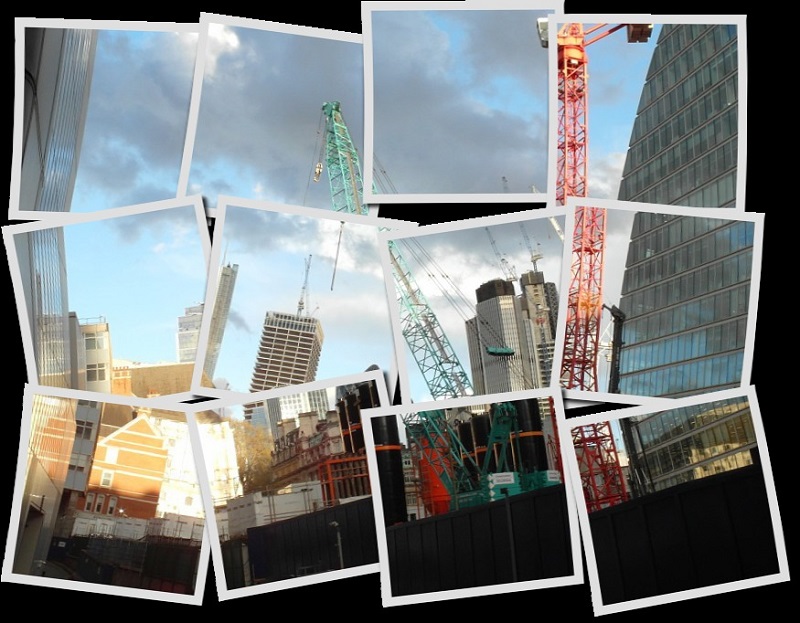Architectural publishing

|
If your practice is considering publishing a book, this article sets out some issues to consider and offers some suggestions for making the process as productive as possible.
Contents |
[edit] A brief background on architectural publishing
Architectural publishing has a number of particular characteristics not found in other areas of publishing.
Architectural books are expensive to produce because they need to hold their own in a design-conscious and visual marketplace. Their cost comes from their high production values as well as the large amount of team work which goes into designing and writing them. Architectural publishers find ways of offsetting these high costs. Some limit the range of their list to books on well-known companies and common topics and theories, others subsidise their architecture books from other more commercial areas of their business because of the kudos associated with architects. Most ask for a contribution towards the production costs of the book. Other sectors of the industry frown on this and call it 'vanity publishing' and this stigma means that even though the biggest publishing houses are known to ask for contributions, few admit to the fact.
Sales are relatively limited because it is a specialist market. Hardly any architectural books make it to the high street. Most book shops interpret the built environment through history or lifestyle (books on interior design are placed alongside the built environment on the architecture shelf).
In spite of this, there is a thriving trade. A significant number of interesting and innovative architectural books are published every year. It is a fundamental means by which professionals communicate their ideas in a fast-moving global arena. A thriving trade is found in:
- Specialist book shops.
- Booksellers over the internet.
- Specialist private libraries in some larger companies and trades associations.
- University libraries.
- Some larger public libraries.
[edit] Issues to consider when embarking on an architectural publication
- What are your practice's aims in undertaking the project? Given that it is unlikely to be a lucrative undertaking, the criteria for judging the success of the project need to be outlined at the outset.
- Who is the audience? The kinds of book prepared for technical specialists are very different to those for clients or students or the general public.
- What has the practice got to say? Is there anything new in the material?
- Is the practice ready? Once published, a book remains in the market place for a long time. It is important not to rush into publishing as an underdeveloped first book may compromise a future publication's commercial viability. Once a book is in the marketplace it cannot be retracted. An architecture practice in its early years might better first try the self-publishing route (see: Self-publishing for architectural practices), limiting distribution until it is time to make a lasting statement.
- Is there an interesting way of structuring the content, for example by breaking it down according to theme or a linking concept?
- What is the budget? The practice needs to be very clear about how much money it is prepared to spend. The cost of different approaches to publishing varies significantly.
- What material exists? Publishers expect practices to provide imagery related to their work. The costs of securing photography rights or paying to have drawings re-sized or digitised can be significant and should be factored into budget planning at the beginning of the project. Contracts with existing photographers should be checked and discussions held on prices for using imagery at the outset. Photography fees can be a significant element of a publishing project.
- What skills are there in the practice? As well as the raw content provided by the practice, a book requires an editor, writer, proofer, designer and photographer as well as marketing and distribution services.
- What is the timescale? Publishing a book can take from 12 to 18 months.
[edit] The process of publishing
[edit] Getting started
Commercially-published books can be instigated by a publisher approaching an architectural practice, or by architects themselves deciding they have an idea and approaching a publisher.
In the second scenario it is important for the architectural practice to prepare their ideas to a stage which suits a publisher. Over-developing ideas will result in a publisher feeling they cannot shape the book and insufficient development makes it impossible to judge a book's commercial viability.
A practice can help to seek the advice and input of a publishing consultant to help gauge whether the book is a viable proposition before they invest significant time and money into the project. This process might include:
[edit] Developing the concept
- Create a long list of possible ideas around a theme.
- Research the market place to check if the idea has already been published. This process will start a long list of likely publishers.
- Attend a meeting with potential collaborators and contributors to consider the long list of ideas and flesh out ideas.
- Approaching publishers with an 'in-principle' concept does not guarantee a book, but it reduces the risk of a rejection.
- Editors can say straight away if they are not interested although they are not in a position to agree a title until it is developed to a point where they have something to put in front of their editorial board.
[edit] Developing the book proposal
This process takes some time and would mean selecting and appointing a designer. The proposal sets out a practice's thinking so that a publisher can judge the proposed book's commercial value. It usually includes an overview of the potential book's concept, contents, visual approach (potentially with sample spreads), likely audience, timescale, and proposed team.
[edit] Sending the proposal to selected publishers and negotiating a deal
The proposal is sent to pre-selected editors who present it at internal board meetings within the publishing house.
If it is accepted, the publishing house will propose a deal. In the positive event of receiving more than one deal, a negotiation over terms follows.
[edit] The publishing process
- Once a publisher has agreed to publish a book it issues a contract setting out the financial and contractual terms of publication, including the royalty rates to which the architecture practice (or named author of the book) will be entitled. The publisher may hold back a significant amount to offset real or calculated costs. This is a specialist document and needs to be read with care.
- Once the contract is agreed, the publisher appoints a senior editor to the project to define the book's parameters in terms of content, scope and production specification, as well as to develop the design and texts.
- The publication is often then handed over to a project editor who will see it through layouts, proofing, indexing, production and publication.
The traditional roles are that the publisher undertakes the design, production and distribution while the architecture practice provides the content. However the architecture practice is often asked to support marketing efforts by holding an event and providing mailing lists, but the publisher usually controls the marketing strategy.
[edit] How to make the process productive
Devise a process which involves the whole practice in the creation of the book. This may be a series of workshop discussions about innovation and creativity or the preparation of information about projects which is shared with the team.
Bring in outside partners and collaborators and get them to feed in ideas, and use this to galvanise current working practices. This can have the benefit of breaking up the content and giving the book a more rounded feel.
Apply the research and information gathering undertaken for the book to other media. This may be in terms of website information, positioning articles, a display in the foyer or a leaflet shared with prospective clients. It is useful to consider possible outlets and estimate likely costs and potential audience benefits at the outset.
[edit] Common mistakes
- Underestimating the budget.
- Referring to projects in the future tense (This building will provide....) which dates a book as much as including some dates and costs, policy and legislation information, or naming individuals who may leave.
- Disappointment with the design/final production of the book. It is important to discuss every element of the production, including details such as layout, covers and paper stocks and even price point.
- Poor negotiation with the publisher over marketing.
[edit] Alternatives to traditional architectural publishing
[edit] Self publishing an architectural book
This can be cheaper, quicker and easier to control and may be better suited to up-and-coming practices. (See related article, Self-publishing for architectural practices)
[edit] Producing information for the digital marketplace
Some newly-established architectural publishers specialise in the publication of architectural essays. E-publishing has transformed the publishing industry, and it also has exciting implications for architectural publishing.
[edit] Related articles on Designing Buildings
- Architectural communication.
- Architectural photography.
- Digital marketing for the construction industry.
- Self publishing for architects.
- Technical notes on architectural publishing.
- Writing technique.
- Brand guidelines.
[edit] External links
- RIBA Good Practice Guide: Marketing your practice.
Featured articles and news
Lighting Industry endorses Blueprint for Electrification
The Lighting Industry Association fully supports the ECA Blueprint as a timely, urgent call to action.
BSRIA Sentinel Clerk of Works Training Case Study
Strengthening expertise to enhance service delivery with integrated cutting-edge industry knowledge.
Impact report from the Supply Chain Sustainability School
Free sustainability skills, training and support delivered to thousands of UK companies to help cut carbon.
The Building Safety Forum at the Installershow 2025
With speakers confirmed for 24 June as part of Building Safety Week.
The UK’s largest air pollution campaign.
Future Homes Standard, now includes solar, but what else?
Will the new standard, due to in the Autumn, go far enough in terms of performance ?
BSRIA Briefing: Cleaner Air, Better tomorrow
A look back at issues relating to inside and outside air quality, discussed during the BSRIA briefing in 2023.
Restoring Abbotsford's hothouse
Bringing the writer Walter Scott's garden to life.
Reflections on the spending review with CIAT.
Retired firefighter cycles world to raise Grenfell funds
Leaving on 14 June 2025 Stephen will raise money for youth and schools through the Grenfell Foundation.
Key points for construction at a glance with industry reactions.
Functionality, visibility and sustainability
The simpler approach to specification.
Architects, architecture, buildings, and inspiration in film
The close ties between makers and the movies, with our long list of suggested viewing.
SELECT three-point plan for action issued to MSPs
Call for Scottish regulation, green skills and recognition of electrotechnical industry as part of a manifesto for Scottish Parliamentary elections.
UCEM becomes the University of the Built Environment
Major milestone in its 106-year history, follows recent merger with London School of Architecture (LSE).
Professional practical experience for Architects in training
The long process to transform the nature of education and professional practical experience in the Architecture profession following recent reports.
A people-first approach to retrofit
Moving away from the destructive paradigm of fabric-first.
New guide for clients launched at Houses of Parliament
'There has never been a more important time for clients to step up and ...ask the right questions'
The impact of recycled slate tiles
Innovation across the decades.
EPC changes for existing buildings
Changes and their context as the new RdSAP methodology comes into use from 15 June.


























